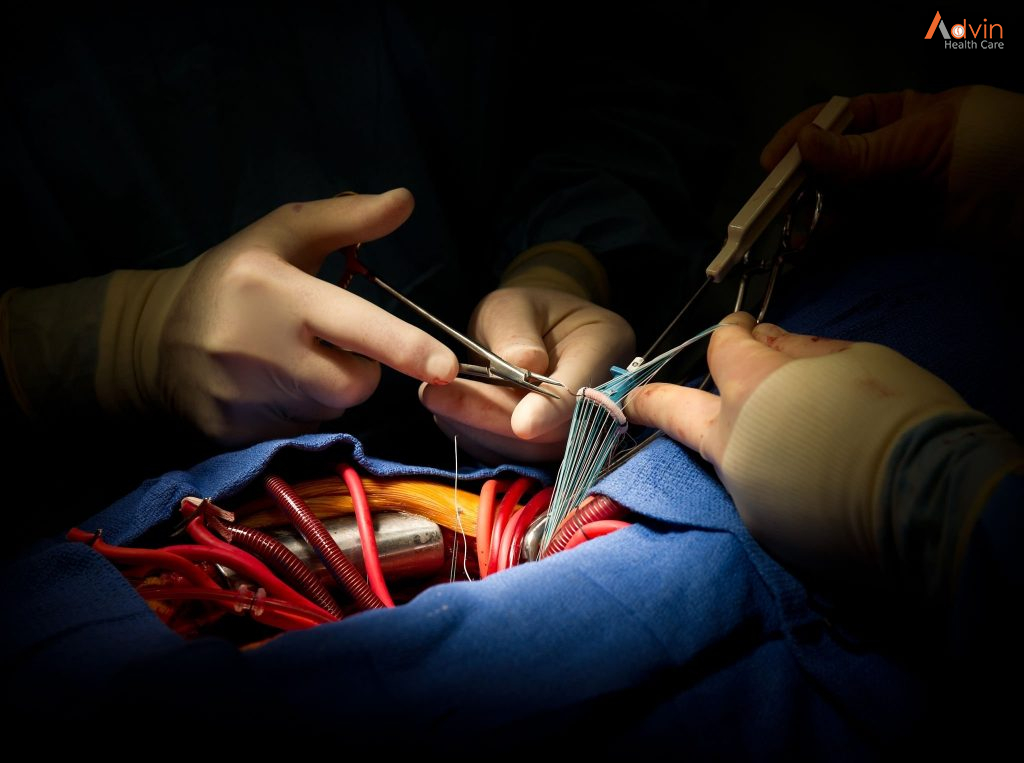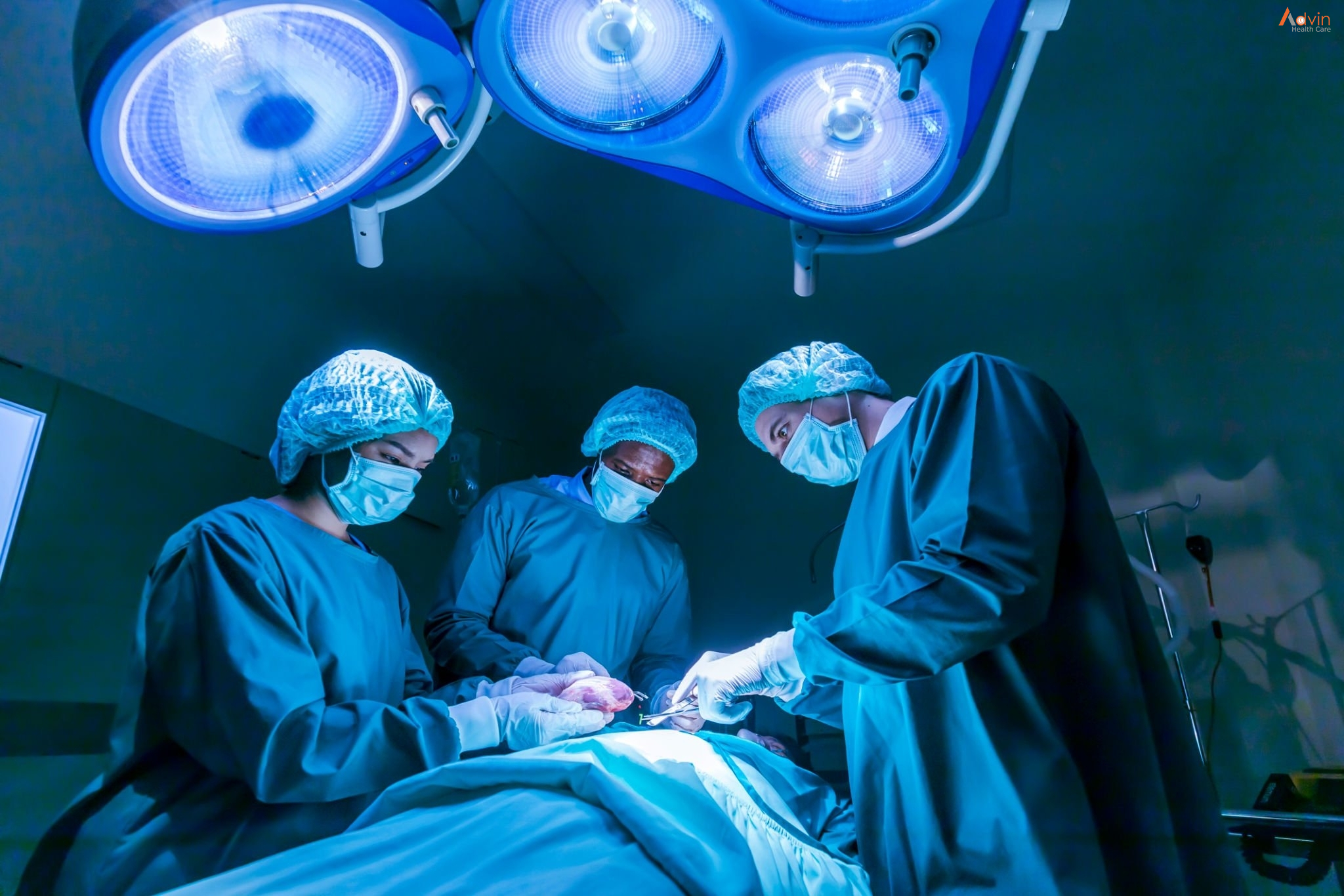Open heart surgery is an umbrella term for various procedures that involve opening up a person’s ribcage through a large chest incision in order to expose their heart. This is a major operation that may be performed for a number of reasons including bypassing a blocked heart artery, repairing a diseased heart valve, or transplanting a healthy heart.
While the surgery offers many benefits and is often life-changing, recovery is usually gradual and challenging. After surgery, patients must be firmly committed to their follow-up care and heart-healthy lifestyle habits.
What Is Open Heart Surgery?
Open heart surgery is an inpatient operation performed by a cardiothoracic surgeon or heart transplant surgeon in a hospital under general anesthesia. This type of surgery may be scheduled or performed emergently, depending on the patient’s medical circumstances.
During open heart surgery, the surgeon makes a large incision in the middle of the patient’s chest. The breastbone (which is connected to the ribcage) is then cut in half lengthwise and spread apart in order to expose the heart within the chest cavity.
Once the heart is exposed, the patient is connected to a heart-lung bypass machine. This machine takes over the heart’s function, pumping oxygen-rich blood throughout the body. As a result, the surgeon is able to operate on a “still” heart (i.e., one that is not beating and has no blood flowing through it).
Open heart surgery may be performed for many different reasons. Most commonly, it is used to bypass a diseased heart (coronary) artery—what’s called a coronary artery bypass graft (CABG).
Various Surgical Techniques
Even though open heart surgery is an invasive technique, it’s still widely used as it allows the surgeon to directly visualize the heart and its surrounding blood vessel supply.
That said, over the years, various minimally invasive approaches have emerged. These alter what most expect of open heart surgery in some key ways and may or may not be viable options, depending on the case.
For example, with the minimally invasive direct coronary artery bypass (MIDCABG) approach, the surgeon makes several small incisions on the left side of the chest in order to reach and operate on a patient’s coronary arteries.2
With this approach, most patients are not placed on a heart-lung machine.3 This means that the flow of blood through the body is maintained by the heart during the procedure; this is called “off-pump” surgery.
There are also minimally invasive valve repair or replacement techniques. With minimally invasive mitral valve surgery, for instance, a small incision is made on the right side of the chest.4
A specialized instrument is then inserted through the small opening and used to repair the valve.
Purpose of Open Heart Surgery

Open heart surgery is used to treat a number of different heart conditions.
Coronary artery disease (CAD), the most common indication, occurs when fatty clumps (plaques) clog the arteries that supply blood to the heart muscle. This results in reduced blood flow to the heart. If the blockage is significant, angina, trouble breathing, and, in some cases, a heart attack may occur.
Open heart surgery may also be used to:
- Treat end-stage heart failure
- Treat refractory heart arrhythmias, including atrial fibrillation (called the Maze heart procedure)
- Repair diseased/damaged heart valves
- Repair congenital heart defects
- Treat cardiomyopathy (enlarged heart)
- Implant a medical device, like a left ventricular assistive device (LVAD)
- Transplant a heart
The benefits of open-heart surgery are often immense and can include:
- Alleviating or reducing symptoms like chest pain or trouble breathing
- Decreasing the risk of cardiovascular conditions like stroke or heart attack
- Improving survival and quality of life14
Several different pre-operative tests are performed before a patient undergoes open heart surgery.
Examples of these tests include:
- Blood tests, such as complete blood count (CBC) and a coagulation panel
- Electrocardiogram (ECG or EKG)
- Echocardiogram
- Cardiac stress test
- Cardiac catheterization
- Pulmonary function tests
- Psychological and social evaluation (for a heart transplant)
How to Prepare
Once an open heart surgery is scheduled, your surgeon will give you specific instructions to follow.
These may include:
- Avoid chewing, eating, or drinking anything (including water) after 10 p.m. on the eve of your surgery.
- Avoid caffeine and alcohol up to 48 hours before surgery.16
- Shower with a special antibacterial soap starting two to four days prior to surgery.
- Stop smoking and/or tobacco use as soon as possible.
- Cease or continue certain medications prior to surgery.
- Undergo several vaccinations (applicable only to patients undergoing a heart transplant).
What to Expect on the Day of Surgery

Prepping you for surgery will involve several steps, including checking your vitals, placing an IV in your hand, arm, or neck to deliver fluids and medications during surgery, and placing an arterial line (a thin catheter that goes in an artery in your wrist) to monitor your blood pressure.
Once you are in the operating room, an anesthesiologist will give you medications to put you to sleep and a breathing (endotracheal) tube will be inserted. This tube is connected to a ventilator to assist with breathing during surgery.
A Foley catheter will also be placed at this time to drain urine. In select cases, the surgeon may place a thin tube called a Swan-Ganz catheter in a vein in your neck. This catheter measures pressures in and around the heart and is used for monitoring purposes during and right after surgery.
The precise steps of your open heart surgery depend on what exactly is being done (valve repair, heart transplant, coronary artery bypass, etc.) and what technique is being used.
That said, here is a general breakdown of a traditional open heart surgery:
- Access: The skin over your chest will be cleaned, the surgeon will make an 8-inch incision down the center of the chest wall, and then cut your breastbone in half lengthwise. The breastbone will be separated from your ribs and spread apart to expose the heart.
- Operating on the heart: You will be placed on a heart-lung bypass machine. Then, depending on the operation, various steps will be performed. For example, one or more blocked coronary arteries may be bypassed during a CABG. A diseased valve may be removed and replaced with an artificial valve during a valve replacement.
- Completion: The surgeon will remove you from the bypass machine to allow blood flowing through it to re-enter your heart. Temporary pacemaker wires placed during surgery (if applicable) will be attached to the device outside your body. The breastbone will then be sewn back together with small wires. Chest tubes may be placed to drain blood and other fluids around the heart.17 Muscles and skin are then closed with sutures. A sterile bandage will be applied over the large incision site.



